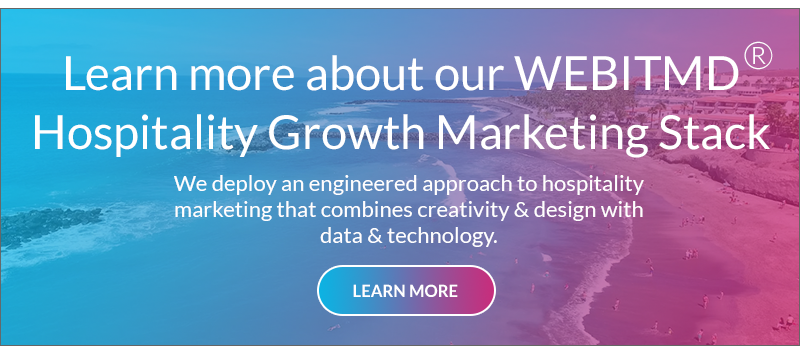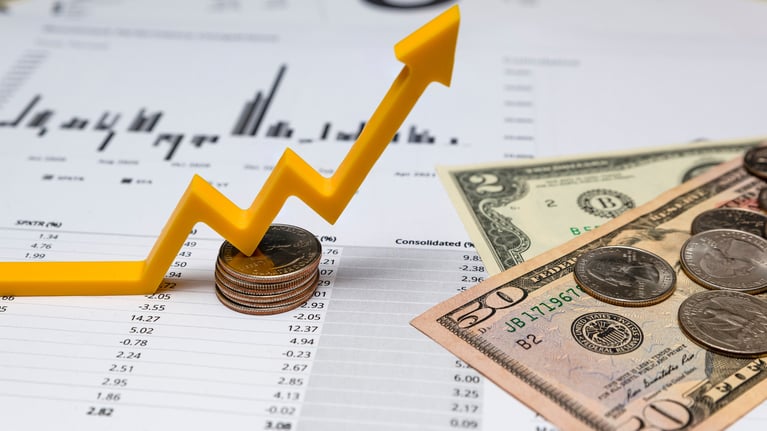Running a hotel is a complex operation involving many moving pieces. But ask any director of operations for a luxury resort or boutique hotel what the most important measurable ratio is for predicting revenue, and they will talk about the revenue per available room (RevPAR) all day long.
The right digital marketing strategies can significantly improve RevPAR and can be a valuable asset in the world of hotel marketing. Because RevPAR is a performance metric used in the hotel industry in which a room’s daily average rate is calculated by its occupancy rate (or by dividing a room’s revenue by the total number of available rooms in a given period), precise targets can be determined with the necessary goals to achieve the desired end result. But this is where most hotel properties drop the ball; they may have the best intentions, but such advanced hotel marketing strategies are best left to hospitality marketing agencies and not internal teams with a lack of skills and tools.
This article is meant to help hotel directors and marketing managers rethink the way they are marketing their properties in respect to to achieving precise goals and improving RevPAR. These are common marketing mistakes we see in the hospitality industry followed by tips our hotel marketing agency uses to increase our client’s RevPAR while driving measurable year-over-year growth and brand awareness.
1. Making Assumptions About Your Guests
Your RevPAR provides a snapshot for how well your hotel is doing in terms of putting butts in beds, and it reveals how much you can ultimately charge in room rates. When our agency onboards a new hotel property, we dive deep into their data, and one of the most common reasons for poor RevPAR originates from making initial assumptions about guests.
Your hotel is unique and special; there isn’t another single property like it. This means your guests have certain niche desires and tastes. However, these vary from person to person. While one set of guests may base their needs around a lifestyle enhancement that’s several steps up from how they live at home, others may focus their needs on a certain kind of in-house spa and other amenities. From room views to decor, and child-free properties to family-friendly resorts, luxury hotel guests are as diverse as the thousands of properties they have to choose from.
You will want to start by creating buyer personas. These are fictional representations of real guests that help marketers target precise segmented groups with the right messaging. A buyer persona will typically cover one’s age, gender, income level, occupation, job title, family status, hobbies and a number of other intimate details.
In order to create buyer personas, data is required. This type of data can be uncovered from your sales department, combing through emails from past guests (as well as those who cancelled a reservation or never booked), and through social listening tactics.
2. Lack of Sufficient Data for Hotel Marketing Campaigns
Another common reason hotel properties suffer from poor RevPAR is their lack of data necessary for targeting groups of people likely to convert to bookings. We already touched a bit on how data is necessary for creating buyer personas. In addition, the right data is necessary for determining why people book, i.e. what channel they came from (so you know where to continue investing), what content they read, and the steps they took in the buyer’s journey before finally making a reservation. Collecting data is also valuable because it reveals where leads dropped off and can shed insight into why someone fails to book a room.
The best hotel marketing agencies use CRMS that have powerful data tools. For example, HubSpot gives marketers advanced intel on leads such as their names, email address, where they work, job titles and more. It reveals how these people found the hotel property’s content, how long they spent reading the article, which pages they went to on the website, and where they dropped off or (hopefully) converted into a booked room. This is data that goes well beyond Google analytics and offers a plethora of value in giving marketers the information they need to optimize marketing strategies designed to improve a hotel’s RevPAR.
3. Hotels Flood Contacts With Annoying Content
Most people who invest in luxury vacations don’t simply look up a hotel that seems ideal and pull the trigger. They expect things to be perfect, so they do a great deal of research before booking a room. This is where email marketing can be your best friend for improving RevPAR, or your greatest enemy.
When we audit our new clients, one common red flag is that hotel properties send blasts to one long email list containing the same topic. In addition, the content tends to be too sales-focused and not personalized for the lead.
The best hotel marketing agencies know how to segment lists, set the right cadence for each buyer group, and target them with personalized content addressing each lead by their individual names while highlighting an intimate need and revealing how booking with the said hotel will give the guest the best solution. The best part is that hotel marketing agencies that master inbound strategies are able to collect the needed data with an advanced CRM, and automate customized emails thus saving the client time and money. The return is a no-brainer, and the results prove to be night from day.
Ready to Learn More About Improving RevPAR?
If you found value in this article, we invite you to download our FREE guide on the WEBITMD Hospitality Growth Stack. Learn how a customized set of tools and strategies can raise your RevPAR and position your property to be THE leader in your luxury hotel space. Curious to see where you currently stand? Give us a call and let’s explore your positioning and the possibilities for hitting your growth goals!








.jpg)



.jpg)





![5 Reports to Elevate Your HubSpot Sales Dashboard [+ Examples]](https://blog.webitmd.com/hs-fs/hubfs/Imported_Blog_Media/6-winning-examples-of-a-hubspot-sales-dashboard-2.png?width=767&name=6-winning-examples-of-a-hubspot-sales-dashboard-2.png)